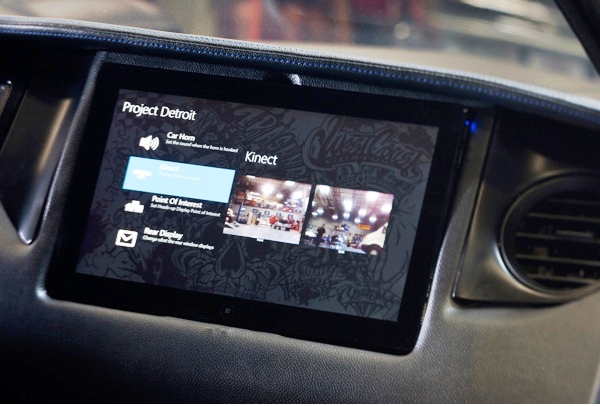Kinect for Windows Technologies: Boxing Robots to Limitless Possibilities
Most developers, including myself, are natural tinkerers. We hear of a new technology and want to try it out, exploring what it can do, dream up interesting uses, and pushing the limits of what’s possible. Most recently, the Channel 9 team incorporated Kinect for Windows into two projects: BoxingBots, and Project Detroit.
The life-sized BoxingBots made their debut in early March at SXSW in Austin, Texas. Each robot is equipped with an on-board computer, which receives commands from two Kinect for Windows sensors and computers. The robots are controlled by two individuals whose movements – punching, rotating, stepping forward and backwards – are interpreted by and relayed back to the robots, who in turn, slug it out, until one is struck and its pneumatic-controlled head springs up.
The use of Kinect for Windows for telepresence applications, like controlling a robot or other mechanical device, opens up a number of interesting possibilities. Imagine a police officer using gestures and word commands to remotely control a robot, exploring a building that may contain explosives. In the same vein, Kinect telepresence applications using robots could be used in the manufacturing, medical, and transportation industries.
 Project Detroit asked the question, what do you get when you combine the world’s most innovative technology with a classic American car? The answer is a 2012 Ford Mustang with a 1967 fastback replica body, and everything from Windows Phone integration to built-in WiFI, Viper SmartStart security system, cloud services, augmented reality, Ford SYNC, Xbox-enabled entertainment system, Windows 8 Slate, and Kinect for Windows cameras built into the tail and headlights.
Project Detroit asked the question, what do you get when you combine the world’s most innovative technology with a classic American car? The answer is a 2012 Ford Mustang with a 1967 fastback replica body, and everything from Windows Phone integration to built-in WiFI, Viper SmartStart security system, cloud services, augmented reality, Ford SYNC, Xbox-enabled entertainment system, Windows 8 Slate, and Kinect for Windows cameras built into the tail and headlights.
One of the key features we built for Project Detroit was the ability to read Kinect data including a video stream, depth data, skeletal joint data, and audio streams over the network using sockets (available here as an open source project). These capabilites could make it possible to receive an alert on your phone when someone gets too close to your car. You could then switch to a live video/audio stream, via a network from the Kinect, to see what they were doing. Using your phone, you could talk to them, asking politely that they “look, but not touch.”
While these technologies may not show up in production cars in the coming months (or years), Kinect for Windows technologies are suited for use in cars for seeing objects such as pedestrians and cyclists behind and in front of vehicles, making it easier to ease into tight parking spots, and enabling built-in electronic devices with the wave of a hand or voice commands.
It’s an exciting time to not only be a developer, but a business, organization or consumer who will have the opportunity to benefit from the evolving uses and limitless possibilities of the Kinect for Windows natural user interface.
Dan Fernandez
Senior Director, Microsoft Channel 9